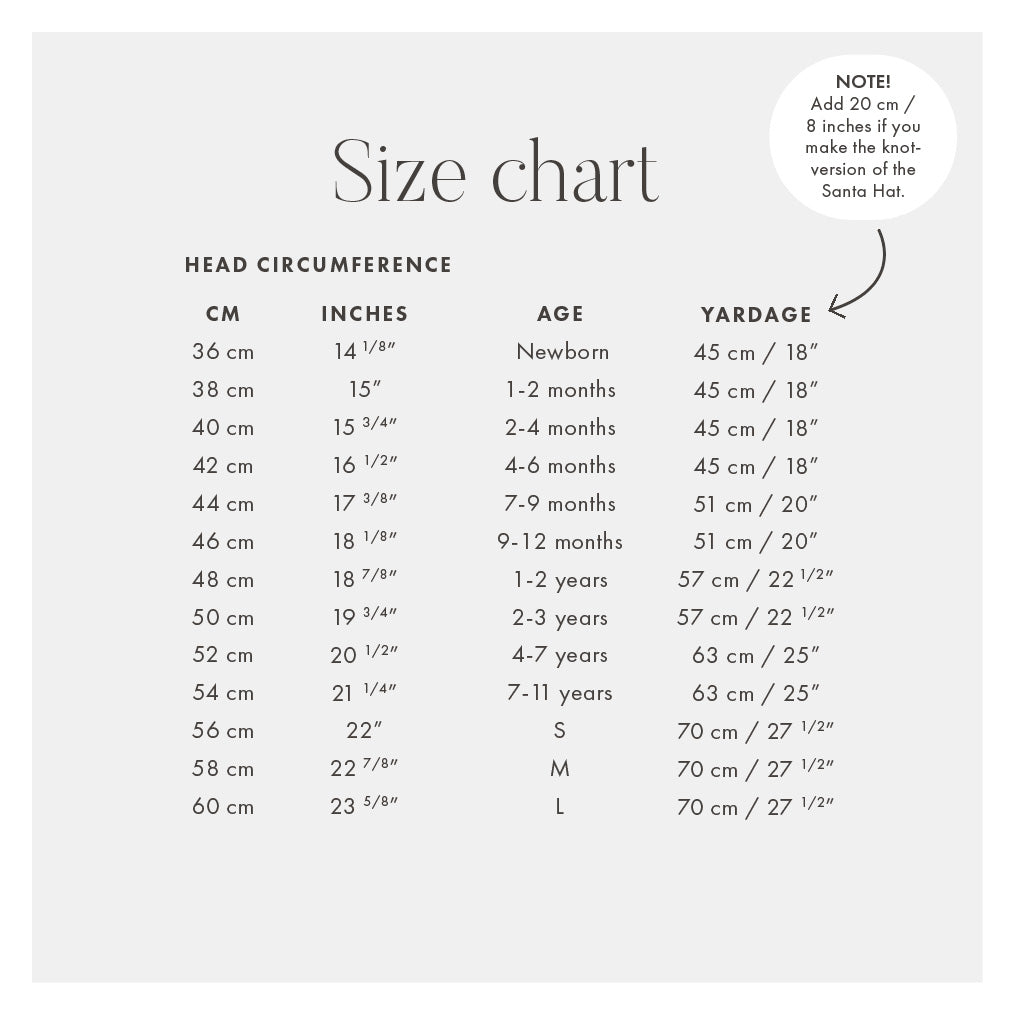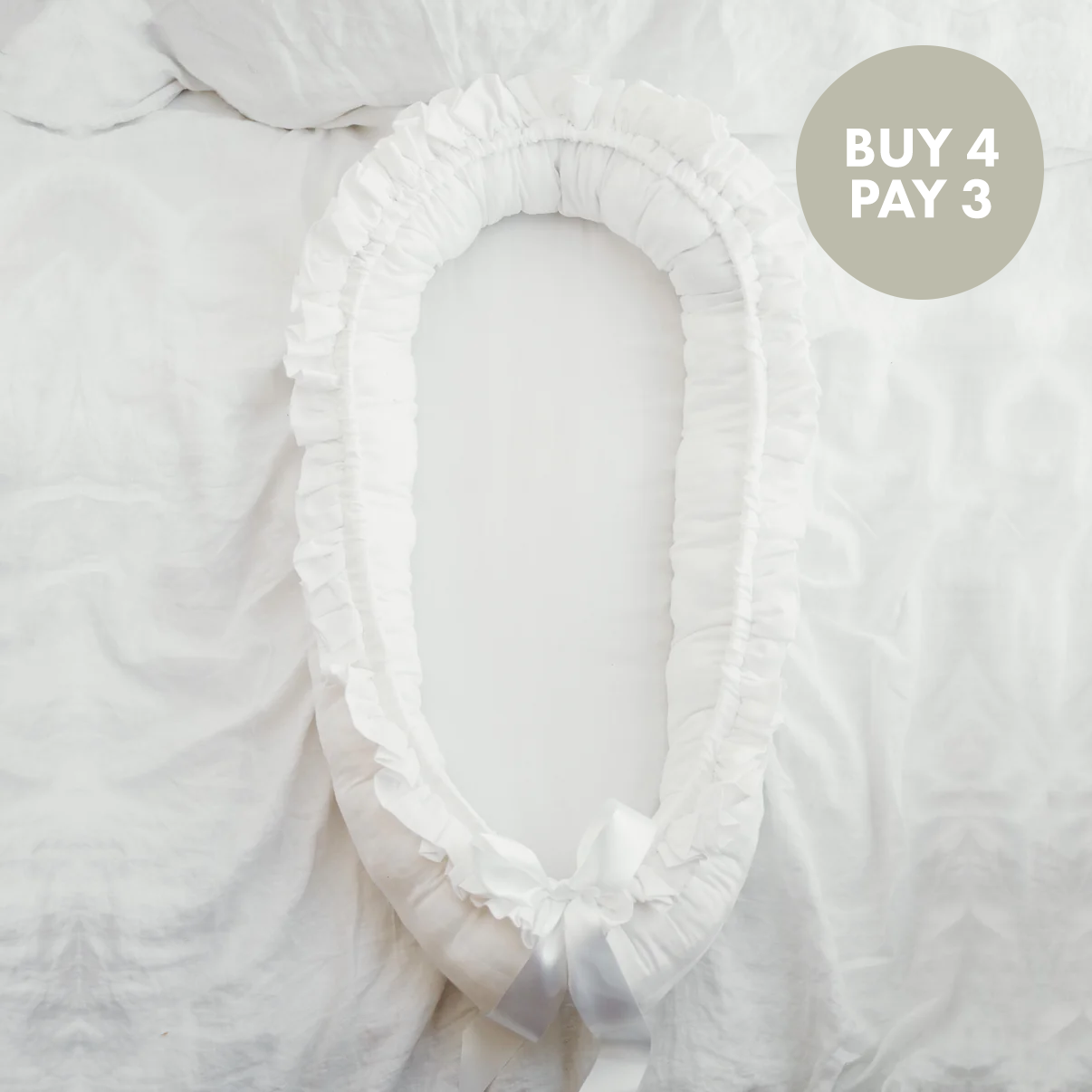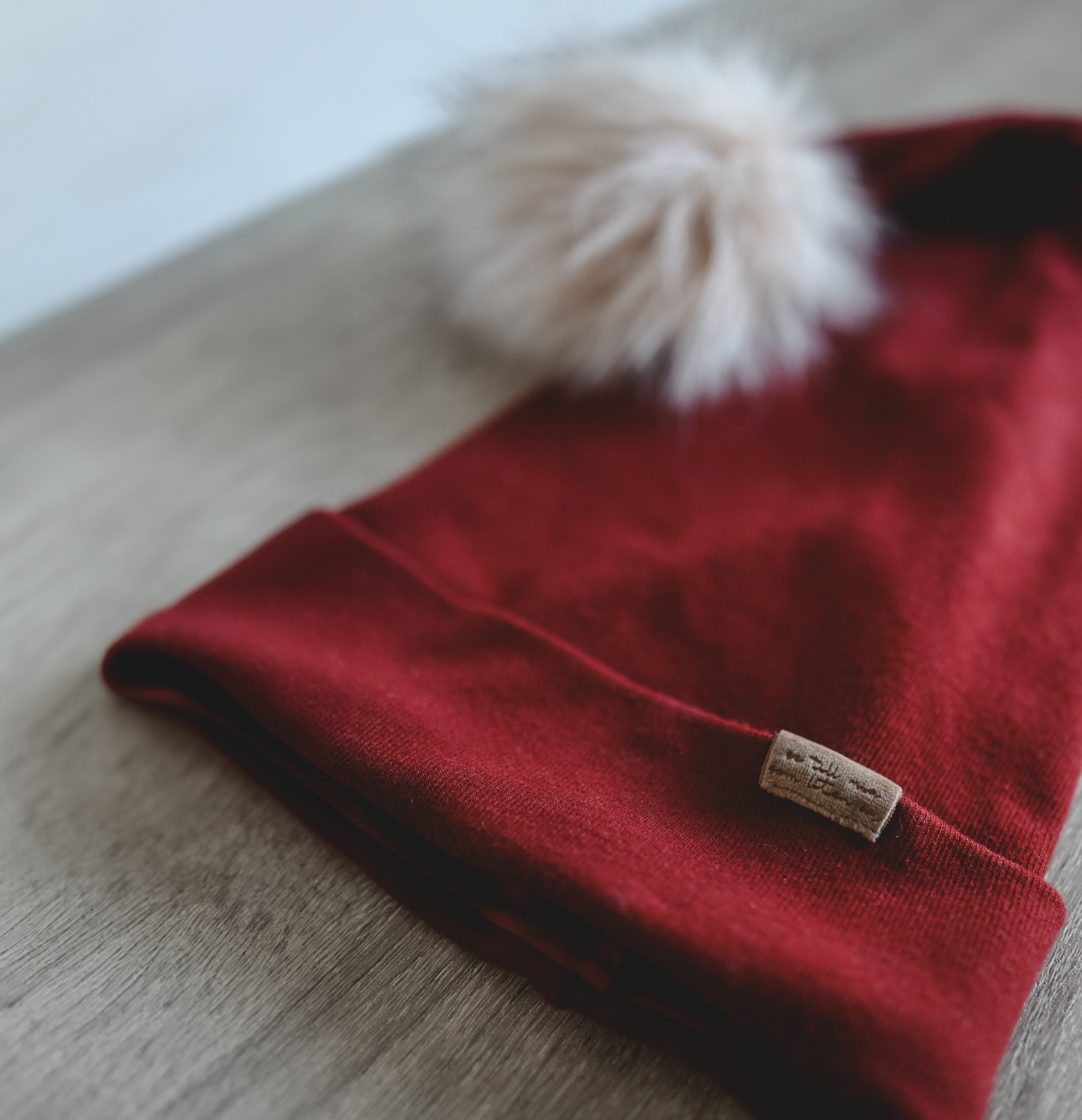Storleksguide & Tygåtgång
Storlekarna på luvan bestäms enligt mottagarens huvudomkrets. Om du syr i ett mindre elastiskt tyg än det som rekommenderas kan du behöva sy en luva i en större storlek.


Sewing pattern on a Babyest with a ruffle edge.
NOTE! This is a slightly more advanced baby nest pattern with ruffles , here you will find my simple babynest pattern.
You need:
Other good things to have: Button pins, ruler, marker pen with disappearing ink (eg a Frixion pen), fabric scissors, thicker sewing thread in a different color, safety pin.
Sewn with ordinary sewing machine .
Difficulty level: ★ ★ ★ (3 of 3)
The frill baby nest is sewn from two pieces of fabric, a long channel and a long frill. It is, unlike many other baby nest patterns, sewn completely without edging to make the process much easier.
To get the length needed for the ruffle and the channel, shorter pieces can very well be spliced without spoiling the look of the baby nest. The fabric allowance mentioned (220 cm x 140 cm washed/pre-shrunk fabric) is enough for both the baby nest parts, the channel and the ruffle.
You can choose to use different fabric for the inside and outside or have the same. For this baby nest, I recommend a woven fabric that does not stretch.
The ruffle works best in a relatively thin fabric (the baby nest in the picture is sewn from a recycled duvet cover).
The baby nest is pulled together with a string or ribbon, and here you can choose anything from a coarser cotton string to a silk ribbon. Choose what you think suits your fabric best.
The finished Babynest will be approx. 70 cm x 100 cm in size. The bottom is approx. 40 cm x 70 cm and the circumference of the edges is approx. 30 cm.
BONUS: Pattern on a removable mattress that makes the baby nest both a little cozier and more practical. The pattern + video tutorial for the Babynest mattress is automatically received as a bonus when purchasing this pattern.
Storlekarna på luvan bestäms enligt mottagarens huvudomkrets. Om du syr i ett mindre elastiskt tyg än det som rekommenderas kan du behöva sy en luva i en större storlek.


Ett symärke i sammet blir enligt mig som pricken över i på Luvisen. Dessa dubbelvikta med texter som "Se till mig som liten är" och "Be the light" är mina absoluta favvisar att använda på tomteluvor just nu.
You may also like